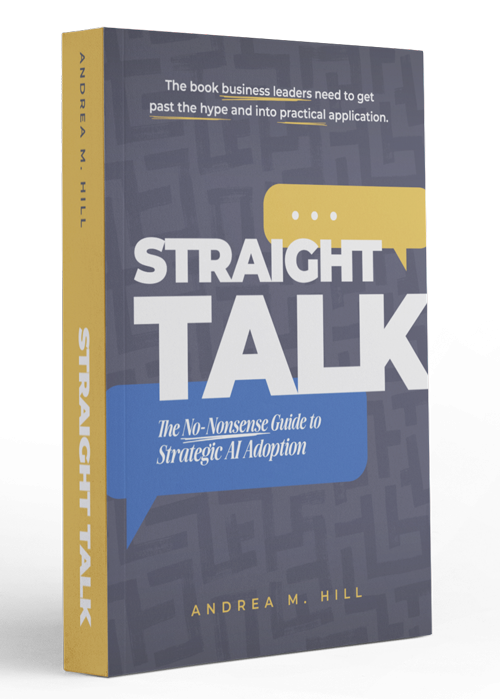Website Accessibility and the ADA: What You Need to Know

Once upon time it was a radical idea to suggest that disabled people exist and are part of society, and therefore should be afforded the same access and opportunities available to the rest of society. Today, we take things like curb ramps at crosswalks, reserved parking spaces, and sign language interpreters at speeches for granted. It is somewhat overdue, but the same effort that opened more of the world to disabled people has come to the internet. That’s what “accessibility” is about: making virtual spaces as navigable to people with disabilities as we have made physical spaces.
What some might not know is that just as those parking spaces and ramps are a legal requirement for businesses operating in physical space, accessibility accommodations are legal requirements for commercial websites. Many countries and entities, including the US, Canada, and EU, have laws stipulating that website owners must make their websites useable by people with disabilities.
Website accessibility is not optional—it is a legal obligation. Every website owner should evaluate their website now and make sure they are compliant with accessibility standards.
The Americans With Disabilities Act
In the US, the Americans With Disabilities Act (ADA), passed in 1990, mandated accessibility requirements on “public accommodations,” which is defined as any facility, whether publicly or privately owned, that is used by the public. Though it is not explicit in the text of the act, in 2022, the Department of Justice made it clear that commercial websites are “public accommodations.”
One of the landmark cases that led to the DOJ’s decision was National Federation of the Blind v. Target Corporation. In this 2006 case, the court held that “the A.D.A. applies to websites that have a connection to a physical place of public accommodation.”
Another important case that led to the DOJ’s interpretation of the ADA was Robles v. Domino’s Pizza, LLC. Guillermo Robles filed suit against Domino’s in Los Angeles because the Domino’s website’s lack of accessibility made it impossible for a blind person like him to order a pizza. His suit cited the ADA, arguing that the website was a “public accommodation.” Domino’s argued that the ADA applied only to their stores and not to their website. In 2019, the U.S. 9th Circuit Court of Appeals ruled in favor of Robles.
Why Make Accommodations?
Lawsuits inevitably lead to reputational damage and a loss of customers and revenue, as well as the costs of unplanned website remediation to bring your website into compliance with ADA regulations. Even if we didn’t have to fear lawsuits, taking a few steps to make our websites more accessible to people with disabilities ought to be a self-evident good from a business ethics perspective. Our lesser self might see an investment in time and money and wonder if it will pay off, but our better self will see the broader social benefit in creating a more equitable internet.
From a purely numbers perspective, an accessible website gives you a competitive advantage. Forbes reports that “only 3% of the internet is accessible to people with disabilities, and the majority of business owners still don’t know how to make their websites accessible… for the 26% of American adults who live with a disability.” Website accessibility compliance gives you the opportunity to serve a community the majority of websites just aren’t serving and become a leader of a movement that is only getting started.
OK…But How Do I Make My Website More Accessible to Visitors With Disabilities?
It's a lot easier to understand the “how” of painting a parking space and paving a ramp than it is to understand website accessibility. The good news is that inclusive design doesn’t have to be difficult. We regularly conduct accessibility audits and create websites that follow the principles of inclusive design. We can help you address the barriers to entry people with disabilities face online:
Poor color contrast: Certain text and background color combinations will render text invisible to people who are colorblind or have visual impairments. Likewise, relying on color only to convey information will make browsing impossible for these users.
Lack of alt text on images: Also known as an image description, alternative text is a brief description of an image inserted into a website’s underlying code. A type of text-to-speech assistive technology called a screen reader will read the alt text out loud to a user with a visual impairment. image, video, and infographic on your website should have alt text.
Lack of navigation options: People with motor disabilities may not be able to use a mouse or trackpad. Websites must be navigable by keyboard to be accessible to these users. Visually impaired users might require a larger mouse pointer or a larger font size to comfortably navigate your website. Presenting this option to them will tear down another accessibility barrier.
Lack of video captions: Video has become ubiquitous on the internet, and failing to include captions on videos may drive away some of the 48 million Americans with hearing loss.
Next Steps
When you design with an eye for website accessibility, the inclusive design choices you make won’t only benefit internet users with disabilities. They improve the user experience for all visitors. Better color contrast doesn’t only help people with colorblindness; it’s just better design. Alt text helps people who use screen readers, but it also boosts your SEO. As for video captions…who doesn’t watch Netflix with the captions on these days?
If you are worried that your website does not meet the standards laid out by the ADA, don’t panic—but don’t wait for a lawsuit to force you to change! We can conduct a website accessibility audit and give you a report containing recommendations for how to improve the accessibility of your website.
If you’ve been thinking it’s time for a new website anyway, this may be a good time to do it, and build accessibility into your site from the ground up.
Need help getting it done? Click the button at the top of the page to book a free meeting.
Andrea Hill's
Latest Book
Straight Talk
The No-Nonsense Guide to Strategic AI Adoption

Where other books focus on prompts and tools, this book gives business leaders what they actually need: the frameworks and confidence to lead AI adoption responsibly, without having to become technologists themselves.
Also available at independent booksellers and public libraries.
Are You Ready to Do Better Marketing?
WerxMarketing is all about performance marketing. That means giving you the tools you need to connect with customers, enable your sales efforts, and turn leads into loyal customers. Ready to learn more about how we do that? Book a free consult and bring your questions. See if you like working with us on our dime, and get some good advice in the process.